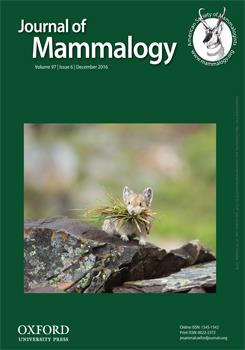The dhole (Cuon alpinus) is an endangered social canid that inhabits the forests of southern and southeastern Asia. A scarcity of field studies and inconsistent findings have led to a poor understanding of their ecology and conservation status. We compiled an ethogram of dhole behavior based on analysis of 395.35 min of video recordings. We recorded 3,394 behavioral events in 1,654 video clips lasting 10 s each. We classified behavioral events into 6 categories: Locomotion, Resting, Social Behavior, Feeding, Scent Marking, and Miscellaneous. Behavioral events associated with Locomotion were most frequent (40.95%), as was the proportion of time spent on such behaviors (41.89%). Dholes spent the least time exhibiting Miscellaneous and Scent Marking behaviors (1.45% and 2.64%, respectively), as well as the lowest frequency (0.74% and 4.01%, respectively). Although scent marking was relatively rare, we observed unique scent-marking behaviors in this study, including “hind bounce” and “hind scrub.” The time spent on different categories of behaviors differed significantly among males, females, and subadults. We also used camera traps and opportunistic observations to investigate the activity patterns of dholes in dry deciduous forest of Tadoba-Andhari Tiger Reserve in central India, where they are sympatric with other large predators including tigers (Panthera tigris) and leopards (P. pardus). Our findings suggested that dholes were primarily crepuscular. Fundamental knowledge about behavioral ecology is crucial for the conservation of any species, and our findings provide a new foundation for future behavioral research on this endangered social canid.
How to translate text using browser tools
12 September 2016
A whistle in the woods: an ethogram and activity budget for the dhole in central India
Pallavi Ghaskadbi,
Bilal Habib,
Qamar Qureshi
ACCESS THE FULL ARTICLE

Journal of Mammalogy
Vol. 97 • No. 6
November 2016
Vol. 97 • No. 6
November 2016
activity
behavior
dhole
dry deciduous forest
ethogram




